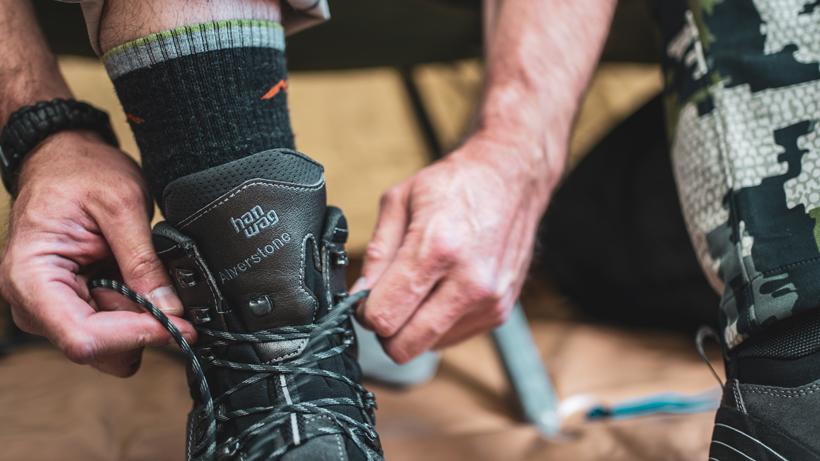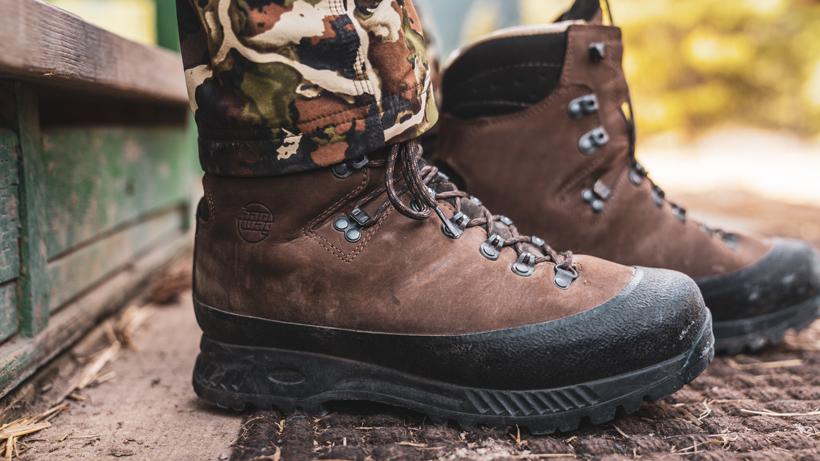





A decade ago, when you went to the store to buy hunting boots, your biggest decisions were leather or rubber and steel-toed or not. Nowadays, there are so many great companies out there providing high-quality boots tailored for different hunting styles. There are boots for waterfowl hunting, boots for low country hiking, boots for mountain climbing and more. There are so many different variations of boots that choosing a boot has become complicated. Even though boots are more complex than in years past, your feet will be thankful because selecting the right boot for you and your hunt can make your experience so much better. After all, you do not want to be hiking up mountains in rubber boots or wearing thick insulated boots on your Arizona desert hunt. Here are some tips for selecting the perfect boot for you and some information to think about. It is also important to mention that the GOHUNT Gear Shop has tons of excellent boot information that will give you insight into what hunt type each boot is made to go on.
When it comes to selecting the right boot for the job, the first thing to look at is what style you are looking for and what style works with your hunt. When it comes to selection, you basically have to choose between a rubber-style hunting boot or a lace-up leather or nylon hunting boot. Rubber-style hunting boots are made for relatively flat walking through areas with water. These boots are perfect for waterfowl hunting in marshes, hunting in swamps, near creeks or ponds. Most western hunters I know are more concerned with selecting the right lace-up leather or nylon hunting boot that will help us get up the mountain.
The stiffness of a boot is a critical factor in selecting the right boot for your hunt. Stiffer boots will give you more foot protection in extremely steep terrain while you side-hill, ascend or descend. The thought is that the stiff sole will cut into the edge instead of allowing the boot to bend or twist on your foot, giving you blisters and wearing out your feet. If you are hunting low lying country or flat country, you may not worry about stiffness or go with a boot that has low stiffness and more flex. If you are hunting in extremely steep terrain for bighorn sheep, elk or high country mule deer, you may want to consider one of the stiffest boots they have. Stiff boots can really protect your feet from damage on multi-day hunts.
Insulation is another super important decision to look at when selecting the right hunting boot. The greater the insulation, the warmer the boot will be, but it will also be heavier and bulky. Boots with less insulation tend to be lightweight and less bulky, but your feet might get cold, especially if you are sitting for an extended period of time. Usually, boots with zero to 200 grams of insulation are mild weather boots, boots with 400 to 800 grams of insulation are good boots for cold climates and boots greater than 800 grams are for extreme cold, especially on hunts where you plan on staying in one place for hours at a time. A lot of western hunting requires plenty of hiking and moving, so most of the time, little to no insulation is needed. After all, you can always wear insulated socks. If you plan to hunt from a stationary setup or the temperatures are extreme, consider a boot with good insulation.
Besides the style, stiffness and insulation, the number one thing that can make or break a boot is getting the correct size. A boot that is too big will allow your heel to slide up or down or let your feet move forward or back. This movement creates friction, which creates heat and, then, creates blisters and pain. Picking out the perfect-sized boot is crucial if you are going to love the boot. Using goHUNT’s sizing video and staff comparisons, you should be able to find the perfect fitting boot for your hunt. Once you get it home, you must try it inside the house, with the hunting socks you plan on using to make sure that there is no slippage. Boots typically only stretch and get looser, so it will most likely only get worse if you have movement now.
A lot of people are skeptical about buying boots online and I used to be, too. That was until I started looking at boots in the GOHUNT Gear Shop. The staff at GOHUNT has put hundreds, if not thousands, of hours into breaking down every quality hunting boot based upon weight, insulation, sole type, waterproof status, warranty, stiffness rating, size comparisons, descriptions and more. The information they provide not only helped me get into the perfect boot for my high country elk hunt, but also saved my feet countless hotspots, blisters and pain. Selecting the right boot for a hunt starts with style, stiffness, insulation and sizing, but ends with your comfort. If you get a boot and it’s not comfortable for you, then it’s not the boot for you. You should love putting on your boots every morning and the GOHUNT Gear Shop is here to help you find that boot you will love.